Ferry Birds – May to September 2017
Posted on October 1st, 2017
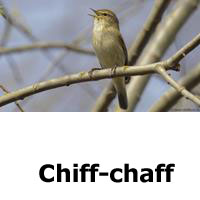
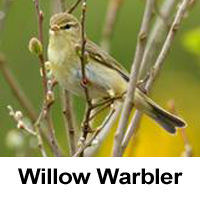
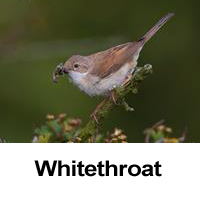
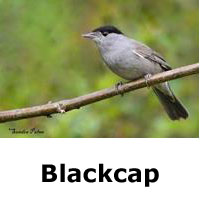

Sand martins were again present in the quarry and could be seen flying low over Ferryhills feeding off whatever insects were flying around.

Eider duck with ducklings appeared in West Bay as usual in early June and hopefully many of them managed to survive.
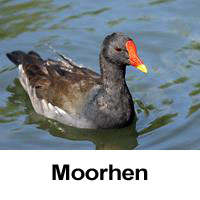
I saw a moorhen with 2 well-grown young on the Jamestown pond on the 18th of August.
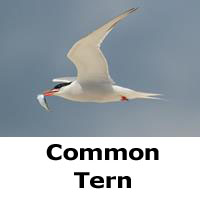
The common terns again failed to nest on the Guvy pier and the site in Inverkeithing Inner Bay was active for a short time but was then deserted.
As compensation Long Craig was alive with common terns throughout the summer and it appeared that they bred successfully again. We had a little more interest with the common terns. It seems that Long Craig was full up and 1 or 2 pairs decided to nest on the dolphin (pier?) in West Bay.
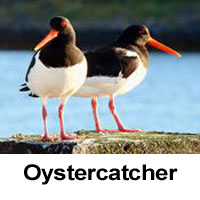
They were very easy to see from near the Boat Club office and there was also an oystercatcher nesting close to them. Terns are renowned for their aggressive behaviour to other birds and human beings and they lived up to this reputation. The oystercatcher took the brunt of the aggression. Away from the terns I saw an oystercatcher with a small but mobile young amongst the seaweed near the play area at Pierhead buildings on the 22nd of July.
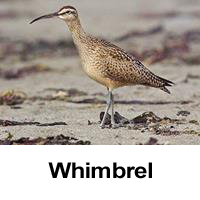
Sightings of more unusual birds over the summer have included a whimbrel flying over West Bay on the 19th of July. This was very definitely a ‘hearing’ because the haar was enveloping the whole village.
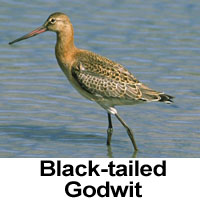
A small flock of black-tailed godwits flew past Carlingnose Point on the 15th of July.
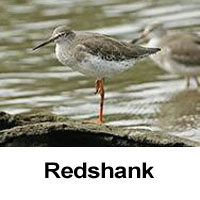
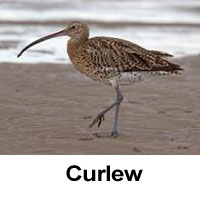
These birds are intermediate in size between a redshank and curlew with a long straight bill.
I was very lucky to see them as I had just sat on the seat as they flew past doubly lucky because seeing the wing pattern is a very good way of identifying them.

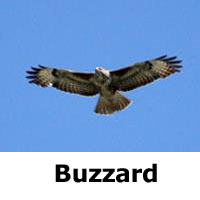
I also spotted a sparrowhawk near the station on the 6th of September and I have heard or seen buzzards soaring over the village on several occasions.


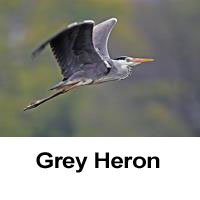
Other sightings I have had includes a few goosander in West Bay on the 12th of July, four turnstones near the Pierhead play area on the 4th of October and herons regularly perched on the Guvy Pier.
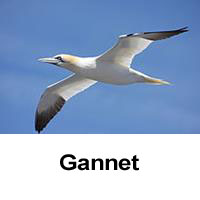
An annual autumn happening involves groups of gannets – mainly immature birds – which circle round in Inverkeithing Bay. As of the 8th of October I have not yet seen any this autumn, but there’s plenty of time left.

Chiffchaffs sing by saying their name, but tend to stop calling when they have paired up. Later in the year they seem to start again but not as persistent as they are in the spring and early summer. I like to think of them just doing a bit of practice for next year. One was doing this near the station on the 14th of September.
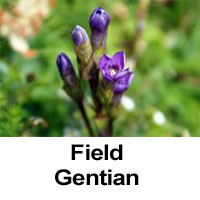
The field gentians on Carlingnose Point reserve flowered again this summer. Over 200 plants were found in the ground around the rocky knoll and also on the high part of the reserve above the quarry.
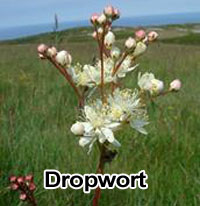
Dropwort appeared again in the watertank field and was also found on the reserve on the steep bank above Carlingnose View. There was one flowering stem near the rocky knoll as well. The annual cutting of the grass on the reserve has already been done and there is a possibility more maintenance will be carried out later in the year.
They were accompanied by 3 or 4 curlews and several oystercatchers; and a few turnstones which feed on the rocky surrounds of the bay and the piers rather than the mud.

Listen out for the pink-footed geese flying over after their journey from Iceland.
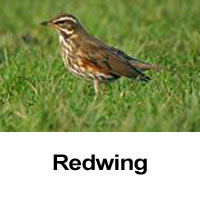
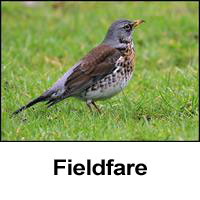
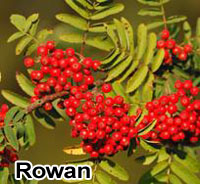
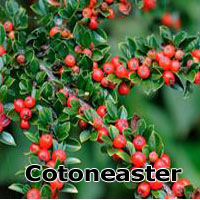
Other winter visitors such as redwings and fieldfares should soon be here so check the rowans and cotoneaster shrubs while on the coastal path.

Check the ivy for insects on a sunny day as well.
John Done
Ferry Birds – January to May 2017
Posted on June 1st, 2017

Most of the redshank that spend the winter in West Bay have left for their breeding grounds as I found only 4 there in the middle of April.


The oystercatcher that share the bay have probably dispersed locally while the curlews move inland and breed on upland moorland in Scotland.
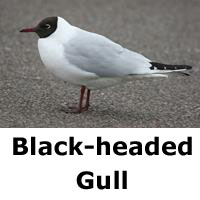
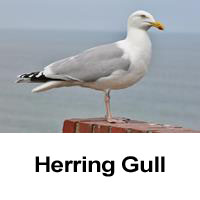
The bay at the moment is quite quiet as the black-headed gulls have also moved to their inland breeding sites in boggy ground near small lochs. However the herring gulls seem to stay around and can be very noisy at times.
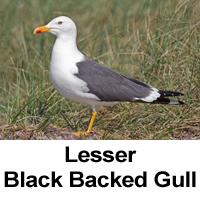
There is also a lesser black-backed gull which seems to think that the top of the school roof is its fiefdom.
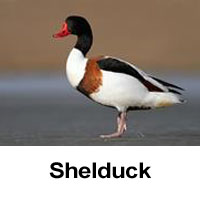
Several shelducks have spent time in West Bay during the winter with at least 13 on the 24th of February and 1 or 2 on the floating mooring at the beginning of May.

The most numerous winter visitor to our coasts is the red-breasted merganser which gathers in flocks off Port Laing. I counted about 75 on the 20th of February and 30 on the 21st of March.
About the same number were there on the 15th of April but I could only find 2 the next day.
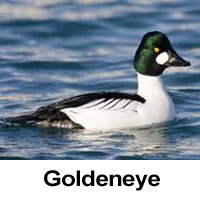
The other duck wintering around our shores is the goldeneye which seem to like Inverkeithing Inner Bay as well as Inverkeithing Bay. Both of these ducks put on a show in spring as the males try to impress the females with a head tossing routine before they leave for their riverside breeding grounds in the Tay and Spey valleys.

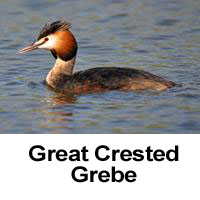
There were several little grebes to be seen from the coastal path from Carlingnose to Cruickness Point and Inverkeithing throughout the winter
However the great crested grebe is now much scarcer than it used to be. My maximum count was about 10 off Cruickness Point.
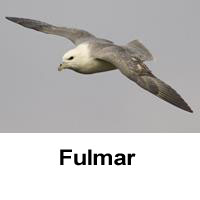
The first sign of breeding activity amongst the sea birds was, of course, the fulmars on Inchgarvie. I saw them first on the 17th of January but they disappeared by the next day. This coming and going carried on ‘til early February and now there are always some on the island and 3 or 4 pairs on the quarry face above Deep Sea World.

The first summer visitor to be heard and seen was the chiffchaff. The first I heard was on the 19th of March and there were several around the village soon afterwards.


Other warblers soon followed and there is often a blackcap singing on The Brae and willow warblers by the coastal path.

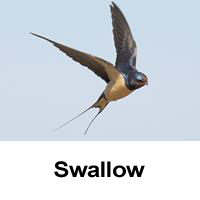
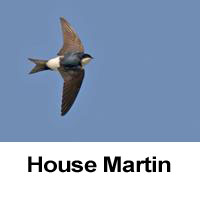
I saw sand martins flying in the quarry on the 8th of April but haven’t seen them since and I have still to see a swallow or house martin in the village.
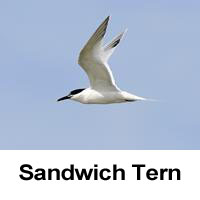

I saw my first sandwich terns off Cruickness Point on the 15th of April and I have heard them flying over the village on several occasions since.
No common terns have arrived yet though.

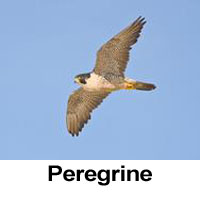
My sightings of our less common birds have included a sparrowhawk over The Brae on 6th of April, a peregrine going south over Ferryhills Road 10 days later and a raven crossing Inverkeithing Inner Bay on the 18th of January.



There was also a raven and 2 or 3 crows seeing off a buzzard above the quarry on the 4th of May.
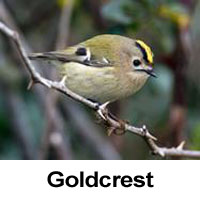

While I was looking for sand martins in the quarry on the 16th of April a goldcrest was feeding in a hawthorn bush about 8 feet away! It is Europe’s smallest bird weighing 4 to 6 grams which translates to about 6 to the ounce!
John Done
Ferry Birds – October 2016 to January 2017
Posted on February 1st, 2017



More or less the same number of redshank is wintering in West Bay along with the usual curlews and oystercatchers
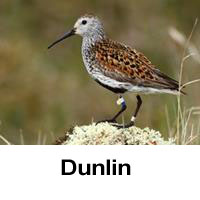

This year there have been more dunlins and they seem to be always there spread out over the mud as the tide ebbs and flows. Up to 7 shelducks have also been in the bay with up to 3 joining the redshanks on the floating mooring.

A grey heron drops in for a feed occasionally as well.


The ducks which winter around our coast have also been seen as last year. There have been up to 40 goldeneye in Inverkeithing Inner Bay and about the same number of red-breasted merganser off Cruickness Point.
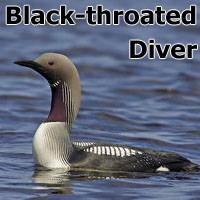
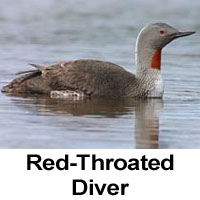
The latter were joined on 15th of November by a black-throated diver and 2 red-throated divers.

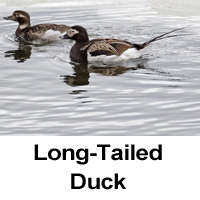
A few eider can also usually be spotted from Port Laing and a female long-tailed duck was seen from there during November.

Little grebe regularly winter on the sea round here and with luck up to 4 can be spotted between Carlingnose Point and Cruickness Point.



As to the less common local birds, I saw a peregrine cavorting with a crow over the quarry on the 1st of January and I have seen or heard a raven a couple of times in the same place.
I also heard and saw a raven over The Brae on the 12th of December.

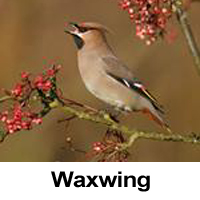
Other local sightings have included a kingfisher at the mouth of the Keithing burn on the 9th November and a small flock of waxwings in a tree by the coastal path near the Carlingnose Reseve on the 20th December. Every now and then waxings appear in large numbers on the east coast of the United Kingdom. They have appeared this winter and they have been spotted in East Lothian and Edinburgh as well as various places in Fife.

Finally an amazing sight I had from the coastal path near Seafield Tower near Kirkcaldy on the 25th of November.
I was walking along when a bird flew past me. It was a swallow! I couldn’t quite believe my eyes. Fortunately it had been seen by 2 or 3 other people to confirm its identity. It should have been well on the way to South Africa by then. A bit of research then told me that the latest ever seen in Scotland was at St Andrews on the 25th December 2000.

As far as I know the fulmars have not yet appeared on Inchgarvie although, similarly to last year, there were some on the cliffs at Kinghorn Bay on the 14th and 15th of January.


Redwings and fieldfare are members of the thrush family which breed in very small numbers in the UK but are mainly winter visitors to the United Kingdom. They breed in Scandinavia and can appear in large numbers depending on the berry crop and the weather in their breeding grounds. The first I saw this winter were flying quite high over the lower village on the 13th of November. Later in December the woodland around the Jamestown pond seemed to be a favourite spot for them.
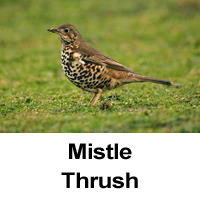
I had several sightings of mistle thrush there as well.

Maintenance work on the Carlingnose Reserve was carried out last September. The grass round the rocky knoll was cut. Further cotoneaster< removal has been done by local volunteers.
John Done
Ferry Birds – May to September 2016
Posted on October 1st, 2016

The redshanks in West Bay did their usual trick of disappearing in April and returning in July.
The main influx was again in July but I did see one in West Bay on the 29th of June. There were about 25 by the end of July and I counted at least 35 on the west side of the railway pier at the end of September.

Another regular happening is the eider ducks with young appearing in West Bay in June and I then saw groups of young with female chaperones fairly often in West Bay, Port Laing and Inverkeithing Inner Bay.
The gulls as usual took their toll, but I saw well grown young in various places locally and between Kinghorn and Kirkcaldy from the coastal path. My count on the 5th of June along this section of the path came to 65 adults and 23 small young.
 The common terns again failed to nest on the Guvy pier. I didn’t notice any interest in the pier from them but Long Craig was alive with terns throughout the summer and it appeared that they bred successfully again.
The common terns again failed to nest on the Guvy pier. I didn’t notice any interest in the pier from them but Long Craig was alive with terns throughout the summer and it appeared that they bred successfully again.

Sightings of uncommon birds have included the peregrine falcon on the north tower of the rail bridge at the end of July and one over West Bay on the 7th of August.

I have had several sightings of ravens including one over the station in July, at Port Laing at the beginning of October and several times during the summer over Cruickness quarry. Both these birds have bred in the quarry in recent years and they seem to have survived the partial re-opening of the quarry.

I also saw a sparrowhawk over The Brae on the 2nd of September.

The quarry was also home to a colony of sand martins this summer. Careful inspection of the floor of the quarry from the watertank field indicated an array of holes in one of the piles of fine stones and dust. Sand martins could be spotted flying in and out of these nest sites and I watched this on several occasions during the summer. From the activity we can assume that nesting was taking place but I have no evidence to decide if they were successful.

An annual autumn happening involves groups of gannets – mainly immature birds – which circle round in Inverkeithing Bay. I have only seen this twice this year. It was on the 11th of September and 5th of October when about a dozen – including one adult were flying round.

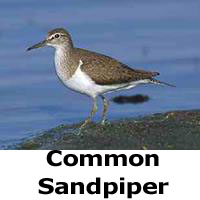

Sightings of more unusual birds over the summer have included a whimbrel flying over the Community Centre on the 10th of September, a common sandpiper at Cruickness Point on the 5th of August and a lesser whitethroat near the quarry viewpoint(!!) on Ferryhills Road on the 12th of June.

The field gentians on Carlingnose Point reserve flowered again this year but not as prolifically as last year. I managed to find about 25 flowering stems near the rocky knoll in August.

The dropwort appeared again in the watertank field and was also found on the reserve on the steep bank above Carlingnose View.
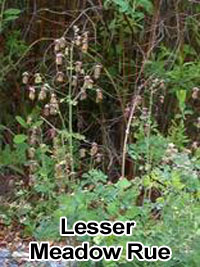
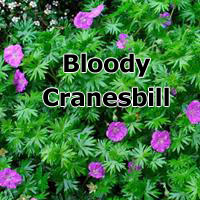
Lesser meadow rue, bloody cranesbill and kidney vetch put on a good show this summer and the devils bit scabious did particularly well later in the summer.
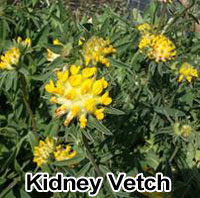
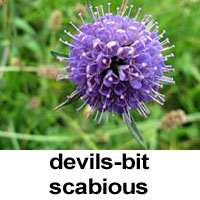
The annual cutting of the grass on the reserve has already been done and there is a possibility more maintenance will be carried out later in the year.

Finally away from the birds to the insects. They are, of course, vital as food for many of our birds so the congregation of wasps, hover flies, house flies and others on the ivy flowers at this time of year should be welcomed. Just have a quick look on a sunny day and see how many different kinds are busy feeding on the nectar from the flowers. I always think how events like this illustrate the interdependence of the plants, insects and birds. The ivy produces flowers which keep the insects going so the birds can feed on them. The pollination of the flowers means the ivy produces berries as food for other birds which spread the seeds from the plant. It all fits together beautifully!
John Done
Ferry Birds – January to May 2016
Posted on June 1st, 2016


The changing of the seasons was, as usual, indicated by the disappearance of the redshank from West Bay. The usual 35 or so wintered here but by the end of April most had gone.


This winter they had been joined in the Bay by a few turnstones as well as oystercatchers and about 5 curlews.

A few shelducks< also seem to have chosen to winter in West Bay and at least 2 are still there. Maybe they will breed there this year.

Two pairs of eider ducks have been in West Bay recently. It seems a little strange because the female should be brooding eggs by now. Perhaps they have been put off by the cool weather and they are waiting for better weather to arrive.

A pair of mallards has also been in the bay.

Other signs of the breeding season have been a few pairs of fulmars on the cliffs above Deep Sea World. They are probably overflow from the pairs on Inchgarvie. The fulmars came back on the 12th of January and did their usual trick of disappearing, coming back a few days later and repeating the trick several times more before settling down to breed.


As usual the first of the birds which have flown from Africa to breed was a chiffchaff. One was at Carlingnose on the 30th of March. This was a week or so later than normal which was probably due to the weather. By the third week of April the chiffchaffs, along with willow warblers and blackcaps were in several places round the village.

There has been a particularly melodious blackcap on The Brae.


Other warblers I have heard or seen have included a whitethroat perching on a bush between Ferryhills road and the quarry on the 9th of May and a lesser whitethroat calling on the reserve on the 5th and 10th of May. These birds are uncommon in Scotland, but have bred at Carlingnose occasionally.



As at the beginning of May I have not yet seen a swallow or sand martin in the village but did see an early group of sand martins at Musselburgh lagoons on the 4th of April and have seen swallows and both sand martins and house martins at Kinghorn Loch on most of my visits there in April and May.


There have been sandwich terns calling raucously along our coastline since their first appearance on the 25th of April. I have not seen any common terns yet. They are the ones the SWT are trying to get to breed on the Guvy pier. Last year was totally unsuccessful on the pier but to compensate they bred on Long Craig and more than 150 young were counted there in July.

My sightings of more unusual birds have included a brief view of a peregrine causing a commotion in West Bay on the 5th of April and one flying around in the quarry on the 9th of May.


A sparrowhawk soared above Carlingnose on the 4th of April and a pair of red-breasted merganser was near the Guvy pier on the 4th of May.

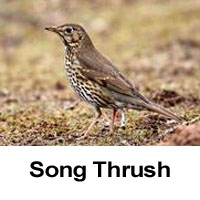
The common resident birds seem to be doing reasonably well. Blackbirds are foraging on the grassy areas on The Brae and a song thrush has been singing loudly near there as well.


Wrens are also calling loudly and both robins and dunnocks are in full flow.
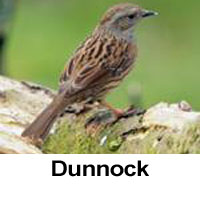
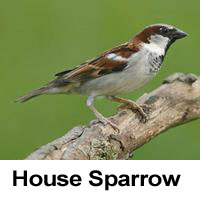
House sparrows are also increasing again with noisy bushes full of them near Town pier, near the school and other places around the village.

Starlings have decreased in the village but there was a small group at the top of Brock Street and one feeding young at the top of the school building on the 9th of May.
John Done
Ferry Birds – October 2015 to January 2016
Posted on February 1st, 2016

West Bay has been the usual focus for waterside birds in the autumn and winter. The mainstays are the redshanks which number about 35.


They are joined by a good number of oystercatcher, with 2 or 3 curlews . . .


. . . and there have also been a several turnstones feeding amongst the seaweed and a few dunlin (15 on the 7th January) on the mud in the bay.

This winter only 2 shelduck have been in West Bay. The first time I saw them was on December 20th.

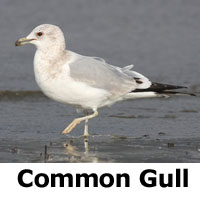

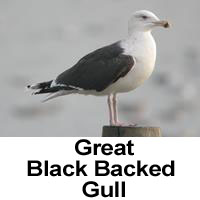


As usual Port Laing has been the site for the red-breasted merganser which spend the winter months around the Forth Estuary. There have been fewer this winter and they have been joined by some goldeneyes although more of these congregate in Inverkeithing Inner Bay. About 20 were there on the 6th of January.


Several little grebes have also been spotted from the coastal path and 2 great crested grebe were on the sea in Inverkeithing Inner Bay on the 8th of January.

It should also be noted that the mute swans which breed at the mouth of the Keithing burn raised 5 young this year. They have often been visible from the coastal path sailing serenely about waiting for the next person to come along to feed them. A mute swan< also paid a fleeting visit to West Bay on the 22nd of November.

I have also noted a grey heron in West Bay feeding at the edge of the tide. Herons have a distinctive barking call which drew my attention to one as it took off and flew towards the west side of railway pier.

One of the first birds to start calling and proclaiming territorial rights is the song thrush. It can often be heard in December but I haven’t heard any in the village so far this winter. Maybe the weather has put them off. I did however hear one near Inverkeithing station on the 6th of January and one at Ferrytoll a day later.


As to the less common local birds, I have seen the peregrine on the quarry face from Ferryhills and I have seen or heard a raven a couple of times from the same place.

A roost of up to 10 grey herons in the working quarry has also been reported.


Other sightings have been flocks of redwing and fieldfares over the station on two occasions in October . . .


. . . and a sparrowhawk upsetting the feral pigeons by the school on the 3rd of January and spreading alarm in West Bay one day in December.
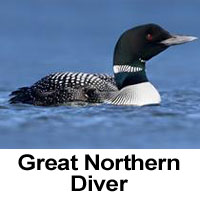

A great northern diver showed up off the Town pier on the 6th of January while I was searching for little auks (see later). As far as I know the fulmars have not yet appeared on Inchgarvie although, as last year, there were some on the cliffs at Kinghorn Bay on the 4th and 8th of January.

I have had a few sightings of some unusual birds around the village. The most surprising was a little auk. It is a sea bird so I was quite surprised to find one fluttering about by the coastal path near Carlingnose Point on the 5th of January. I managed to catch it and launch it back onto the sea in West Bay. I saw it, or another one, in the Bay on the 6th and then saw 2 more later on that day near the Guvie Pier.
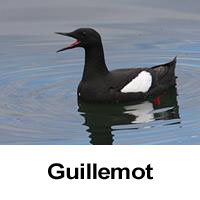
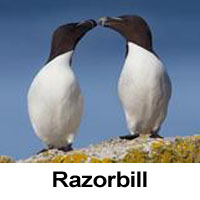
Little auk are small black and white birds related to guillemots and razorbill. They breed in huge numbers on cliffs in the arctic. In winter they move south and are seen in small numbers along the North Sea coasts of the United Kingdom. Occasionally, often after strong northerly winds, they appear in large numbers and this winter this has happened. They even featured on the BBC Scotland 6:30 news bulletin on the 6th of January.

Another unusual sighting for me was on the 1st of December when 2 female blackcaps paid a brief visit to my garden. Blackcaps normally spend the winter in Africa, but over the last 20 years some have taken to wintering in the United Kingdom and they have been seen in North Queensferry several times over the years.
John Done
Ferry Birds – May to September 2015
Posted on October 1st, 2015

The redshank in West Bay did their usual trick of disappearing in April and returning in July. The first I saw back were on the 7th of July and there were 6 there on the 18th.
Last year the first I saw was on the 8th of July!

Other regular happenings include the eider ducks with young appearing in West Bay in June and I then saw groups of young with female chaperones fairly often in West Bay, Port Laing and Inverkeithing Inner Bay. The gulls as usual took their toll, but I saw well grown young in various places locally and between Kinghorn and Kirkcaldy from the coastal path. I do a count every month along this bit of the coast and I counted over 100 adults and at least 30 young there in June.


The common tern again failed to nest on the Guvy pier. I saw a few flying around the pier in May, but no breeding attempts were made. This is the bad news but the good news is that Long Craig was home to many pairs and I counted about 100 birds there in July. There was great activity with adults arriving with a sand eel in their beaks in a continuous stream. Some common terns also nested on the wooden pier in Inverkeithing Inner Bay.
Sandwich tern don’t usually nest on Long Craig, but they come into our area later in the summer to feed up before they fly off to Africa for the winter. This year they turned up in the middle of July in good numbers in noisy groups often with an immature bird chasing an adult begging for food. The Sandwich terns stay around till later in the summer so the last common tern I saw was in Inverkeithing Inner Bay on the 25th of August while there were still Sandwich terns along the coast well into September.
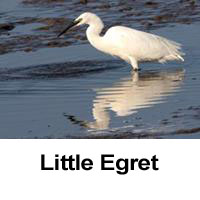

The highlight of the uncommon birds seen was a little egret in West Bay on the 14th of August. It was literally a flying visit as by the time the observer had got his binoculars from his house it had gone! Little egrets are small white members of the heron family and have invaded England from the continent over the last 30 years. In the last 5 years a few have been seen in Scotland regularly with Aberlady Bay being one of their favourite places.
A whimbrel was also seen in West Bay on the same date.


Other sightings of uncommon birds have included the peregrine falcon around the quarry on the 31st of July and a raven in the same place on the 8th of September. Both these birds have bred in the quarry in recent years but are some times quite difficult to see. How the re-opening of the quarry affects them remains to be seen.
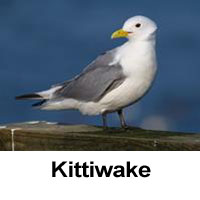
I saw a flock of kittiwakes on the sea just east of the rail bridge on the 13th of August. They drew attention to themselves by calling out their name! Another autumn happening involves groups of gannets – mainly immature birds – which circle round in Inverkeithing Bay. I have only seen this once this year. It was on the 8th of September when about 30 birds were flying round.


Interesting sightings of our more familiar birds have included a few house martins feeding at the back of Port Laing on the 18th of June and a pair of mute swans in Inverkeithing Inner Bay with 5 well-grown young in July.


On 3 occasions I have seen large disperse groups of swallows probably feeding up prior to their migration to South Africa. The first two were on the 14th and 18th of September between Jamestown and the water tank field and the third was over St Margaret’s Marsh on the 28th. Another regular event this time of year is the chiffchaff which start singing again. It is not as persistent or as loud as in the spring and there was one at the north end of Port Laing on the 29th of September. This was the same place where I heard my first chiffchaff this year at the end of March!

The field gentians on the Carlingnose Point reserve reappeared this year. There were at least 100 plants on the reserve including several in the area at the top of the quarry. Why this should happen this year after a complete absence last year is a bit of a mystery.





The dropwort again didn’t show very well although there were several plants on Ferryhills.
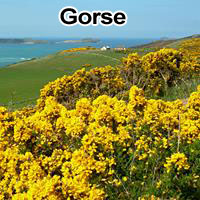


John Done
Ferry Birds – January to May 2015
Posted on June 1st, 2015


The usual change over from wintering to summer birds is progressing quite slowly this year. It may be related to the very changeable weather but things have started. The redshanks have left West Bay and the red-breasted merganser have also disappeared from the sea between Port Laing and Cruickness Point.
The latter didn’t seem to be able to make up their collective minds about flying north and west with 15 there on the 23rd of February and about 35 present on the 7th of April. In between it was often difficult to find more than maybe half a dozen scattered around.

The goldeneye which favoured Inverkeithing Inner Bay have also left for their breeding grounds to the north and west.





The shelduck in West Bay are down to 2 from the peak of about 8 but even these can disappear without warning.

The first summer visitor to appear was the chiffchaff. The first I heard was at the north end of Port Laing on the 17th of March. They were soon singing in many places and when I walked along the coastal path on the 7th of April I heard them in 7 different places between the village and Jamestown. I suppose it could have been the same individual taking the mickey and following me along the path but probably not.


Some of the other warblers which come from Africa to breed here have also made their presence obvious by singing from the trees in the village and along the coastal path. These include willow warblers and blackcaps which are now scattered around the peninsula in good numbers.

My first swallow in the village was on the 8th May above the station although I had seen them elsewhere before that.


Kinghorn Loch again was favoured with many swallows feeding over the loch along with sand martin and a few house martins on the 27th of April. Sand martins have bred in the quarry in recent years, but this may not happen this year as it is now back in use.


Some common tern were back checking out the wooden pier in Inverkeithing Inner Bay on the 3rd of May. They bred there last year and there should be more of them in the next few days so keep an eye out for them if you are on the coastal path near Cruickness Point Last year there were no nesting terns on the Guvy pier but maybe this year they will have some success there. Sandwich tern arrive a little earlier than the common variety and the first local sighting I had was of 2 from the coastal path on the 24th of April. These birds occasionally breed with the common terns on Long Craig, but are mainly seen in the Estuary on their way north or during late summer when returning from their breeding sites further up the coast.



I have had several sightings of some of the less common birds around the village. I saw a peregrine falcon over the quarry on the 17th March chasing a raven away and one doing the same to a herring gull on the 8th of May.


I spotted a sparrowhawk near Northcliff on the 9th of February and one was hunting along the unofficial coastal path between Jamestown and the mouth of the Keithing burn on the 29th of April. Another unusual sighting was a male goosander at this latter spot on the same day.

A couple of mute swans were also in West Bay at the beginning of February.

Eider chicks will also soon be appearing in West Bay and around the coast in general and the resident song birds have probably all sorted out their territorial disputes and many will be incubating eggs.





. . . and from the food collecting of the male blackbirds there are now hungry chicks to feed.
John Done
top of page
